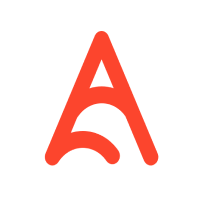
Coin-related
Price calculator
Price history
Price prediction
Technical analysis
Coin buying guide
Crypto category
Profit calculator
What is Commune AI (COMAI)?
Commune AI basic info
What Is Commune AI?
Commune AI is a decentralized, peer-to-peer protocol designed to integrate and optimize developer tools within a unified Blockchain network. Founded by Sal Vivona, the platform aims to create an open, shareable, and reusable digital economy that operates without central authority or bureaucracy. By blending blockchain technology with artificial intelligence, Commune AI enables developers to connect various tools, build AI models, and deploy digital resources in a decentralized, efficient manner.
Built on the principles of decentralization and composability, Commune AI offers developers a flexible and permissionless framework. Its open-source nature allows contributors to integrate their tools and applications seamlessly, without being constrained by rigid structures or processes. The overarching goal is to provide a collaborative ecosystem where tools, knowledge, and resources are easily shared, creating a space for innovation and enhanced efficiency.
How Commune AI Works
Commune AI operates on a blockchain-based protocol that separates computation-heavy elements from the blockchain itself. This architecture ensures efficiency, as the platform offloads the more resource-intensive tasks off-chain, allowing the blockchain to handle only essential economic data, such as rewards and stake information. The protocol uses a stake-based market system that supports two types of network participants: miners and validators.
Key Components of Commune AI:
-
Modules: The platform's basic building blocks, called modules, represent various off-chain computational entities like AI models, datasets, or other digital resources that are accessible via an API. These modules interact within the network to provide utility and services based on blockchain transactions.
-
Subnets: The protocol is divided into distinct subnets, each with its own validation rules and parameters. Subnets operate as independent incentive environments, where miners and validators compete for rewards. Except for the general subnet (subnet 0), each subnet has a founder who controls its parameters, fostering diverse development ecosystems within the network.
-
Validation and Mining: In Commune AI, validators are participants who stake tokens and assess miners’ outputs based on the subnet’s criteria. Miners, in turn, provide outputs or services according to validators' requests, competing for rewards based on their performance. The network's validation system ensures a consensus mechanism, validating the miners' contributions and setting their respective rewards based on their scores.
-
Governance Model: Commune AI adopts a community-driven governance structure via a Decentralized Autonomous Organization (DAO). Stakeholders can submit and vote on proposals using governance tokens, influencing protocol upgrades, parameter changes, and other crucial decisions. The DAO model allows for collective decision-making, ensuring that the platform evolves according to community needs and preferences.
What Is COMAI Token?
The COMAI token is the utility token of the Commune AI ecosystem. With a total supply of 1 billion tokens, it plays a vital role in maintaining the network's economic balance and incentivizing participation:
-
Staking and Governance: Stakeholders use COMAI tokens to participate in the protocol's governance. By staking their tokens, participants gain voting power, allowing them to influence the protocol's development and decide on proposals related to upgrades, parameter adjustments, and resource allocations. This ensures that the decision-making process is decentralized and reflects the community’s interests.
-
Incentives for Miners and Validators: COMAI tokens are also used to incentivize miners and validators within the network. Miners earn tokens by providing computational services or outputs that meet the validators' criteria, while validators earn rewards for evaluating and scoring these outputs accurately. The protocol splits rewards 50/50 between miners and validators, ensuring balanced incentives and promoting active engagement.
-
Access to Digital Commodities: The COMAI token controls access to various resources within the Commune AI ecosystem, including AI models, data storage, and other digital tools. By holding and using COMAI, participants can leverage these commodities to build, deploy, or enhance applications within the network. This functionality aligns with the platform's goal of creating a flexible and shareable economy.
Conclusion
In conclusion, Commune AI combines blockchain and AI technology to create a decentralized, flexible development ecosystem. The platform uses the COMAI token to drive governance, reward participation, and facilitate access to digital resources. With its community-driven, open-source approach, Commune AI offers an adaptable framework for developers and investors within the blockchain and AI space.
COMAI supply and tokenomics
Links
What is the development prospect and future value of COMAI?
The market value of COMAI currently stands at $2.76M, and its market ranking is #1485. The value of COMAI is not widely recognized by the market. When the bull market comes, the market value of COMAI may have great growth potential.
As a new type of currency with innovative technology and unique use cases, COMAI has broad market potential and significant room for development. The distinctiveness and appeal of COMAI may attract the interest of specific groups, thereby driving up its market value.
Is COMAI worth investing or holding? How to buy COMAI from a crypto exchange?
How to get Commune AI through other methods?
What is Commune AI used for and how to use Commune AI?
Learn about other cryptos









































